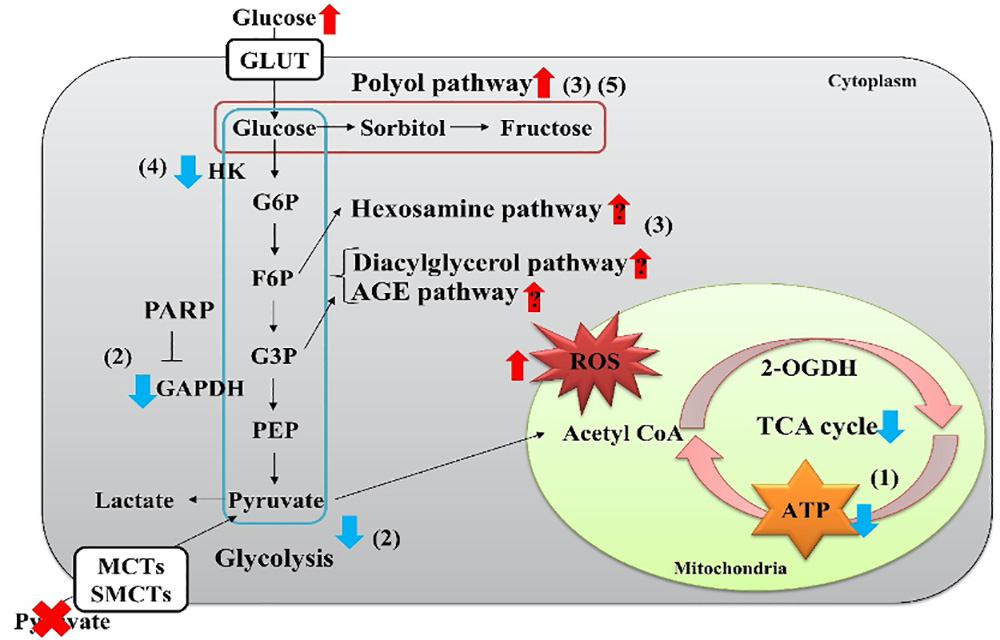
Endogenous pyruvate produced from glucose via glycolysis is a key molecule for ATP production under aerobic and anaerobic conditions, whereas exogenous pyruvate is incorporated into cells via monocarboxylate transporters (MCTs) and predominantly functions as an antioxidant. However, the significance of pyruvate as an antioxidant and glucose metabolism promoter at the cellular level remains unclear. We observed rapid and massive cell death of peripheral sensory neurons and Schwann cells under high-glucose pyruvate-starved conditions. The present study investigated the role of exogenous pyruvate in the functional maintenance of neurons and Schwann cells under high-glucose conditions.

Rapid IMS32 Schwann cell death under high-glucose pyruvate-depleted conditions can be caused by the following sequential metabolic alterations; 1) diminished TCA cycle intermediates and mitochondrial ATP production, 2) reduced GAPDH activity and inhibition of glycolytic flux, 3) enhancement of the polyol and other collateral glycolysis pathways, 4) impaired hexokinase (HK) activity and glucose utilization in the glycolytic pathway, and 5) further enhancement of the polyol pathway flux.
This study was performed in collaboration with Dr. Hideji Yako (Diabetic Neuropathy Project) and others of Tokyo Metropolitan Institute of Medical Science, and Aichi Gakuin University, School of Pharmacy (Laboratory of Medicine). We observed rapid and extensive cell death of primary cultured adult rat sensory neurons and IMS32 immortalized adult mouse Schwann cells under high-glucose (>10 mM) and pyruvate-starved conditions. Exposure of IMS32 Schwann cells to these conditions resulted in a significant decrease in glycolytic flux, mitochondrial respiration and ATP production, accompanied by augmented collateral glycolysis pathways (e.g., polyol pathway). Cell death could be prevented by addition of 2-oxoglutarate (a TCA cycle intermediate), benfotiamine (the vitamin B1 derivative that suppresses the collateral pathways), or the poly (ADP-ribose) polymerase (PARP) inhibitor, rucaparib. The pyruvate starvation-induced cell death under high-glucose conditions may result from the following sequential metabolic alterations; 1) diminished TCA cycle intermediates and mitochondrial ATP production, 2) reduced GAPDH activity and inhibition of glycolytic flux, 3) enhancement of the polyol and other collateral glycolysis pathways, 4) reduced hexokinase activity and glucose utilization in the glycolytic pathway, and 5) further enhancement of the polyol pathway flux. These results indicated that exogenous pyruvate plays a pivotal role in maintaining glycolysis–TCA cycle flux and ATP production under high-glucose conditions by suppressing PARP activity.